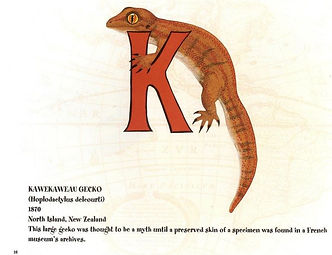THE KAWEKAWEAU/
DELCOURT'S GIANT GECKO
1. The Kawekaweau/ Delcourt's giant gecko, Gigarcanum delcourti, was the largest member of the gecko family that lived in deep forests of the North Island of New Zealand. 2. It was nearly 24 inches long, which is about twice as large as any other gecko species ever known. 3. The last recorded living Kawekaweau was in 1870 by a Maori chief who stated it was, "the width of a man's wrist and had reddish stripes running the length of its body". 4. Scientists thought that the Kawekaweau was simply a legend for a long time. 5. The name Delcourt comes from the French scientist, Alain Delcourt who rediscovered the only known specimen of the Kawekaweau in the Natural History Museum of Marseille in 1986. 6. Myths surrounded Delcourt's giant gecko as it was described as being amphibious, a ground-dweller, a tree-dweller, or even being able to fly! 7. It is thought that the arrival of Europeans and the invasive species they brought; rats, cats, and weasels took their toll on the Kawekaweau.
Extinction
Cometh
Facing the light at the end of the tunnel
EXTINCTION DATE
1870?
The kawekaweau was once thought to be a myth, as it lived deep in the forested areas of the North Island of New Zealand. In fact the only account of the giant gecko came from a Maori chief who found one under the bark of a dead rata in the Waimana valley. This one primary source from 1870 is the only one there is. Alain Delcourt found the only known specimen of the kawekaweau in the depths of the Natural History Museum in Marseille, France in 1986. In 1990, the specimen was delivered back to the Natural History Museum in Wellington, New Zealand. It is believed that invasive species brought by Europeans could have led to the extinction of Delcourt's giant gecko, though no one knows for sure. Although Jurassic Park is fiction, scientists are working on several de-extinction projects. In fact, in 2003 scientists did bring back the extinct Pyrenean ibex, a type of wild goat, for 7 minutes before it died, showing de-extinction is possible. The Kawekaweau might be a candidate. Scientists would potentially use DNA from the one and only specimen that was found in 1986 in the basement of the Natural History Museum of Marseille, in France. France sent this specimen to the National Museum in Wellington, New Zealand in 1990. While it was tested for possible DNA in 1994 without good results, technology has vastly improved since then. If the Delcourt's giant gecko was brought back from extinction could it survive in New Zealand? With this species, it is hard to say since so little is known about its diet, needed habitat, or anything else. New Zealand has fought back against invasive species and helped to revive some of it native animal populations, so maybe the kawekaweau could be more than a mythical creature once more.
COMING SOON
The Kawekaweau's Lazarus tale has yet to be written, but what adventures will await it when it returns to New Zealand? Stay tuned to find out.
More to Explore
All answers lead to more questions
Painting of a kawekaweau by Peter Schouten
Image from A Gap in Nature
VIDEOS & ADDITIONAL INFO
Stuffed specimen found in French Museum Basement
New Zealand Herpetological Society Facts
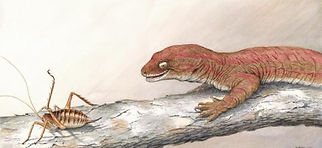
Kawekaweau stalks a giant weta painting
Image from New Zealand Herpetological Society
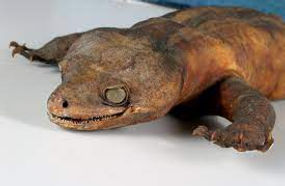

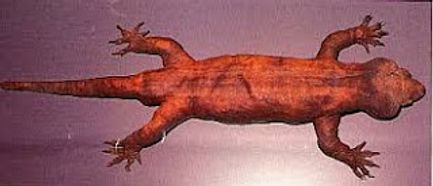
Full specimen
Image from Amazon
Photo of the only specimen
Image from Reddit
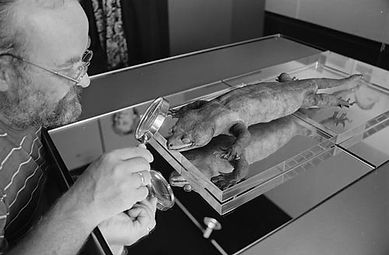
Examining the Kawekaweau
Image from Alchetron

Alain Delcourt who found the stuffed specimen in Natural History Museum of Marseille, France in 1986
Image from
Shuker Nature
